Wellness
Heal Yourself, Holistically
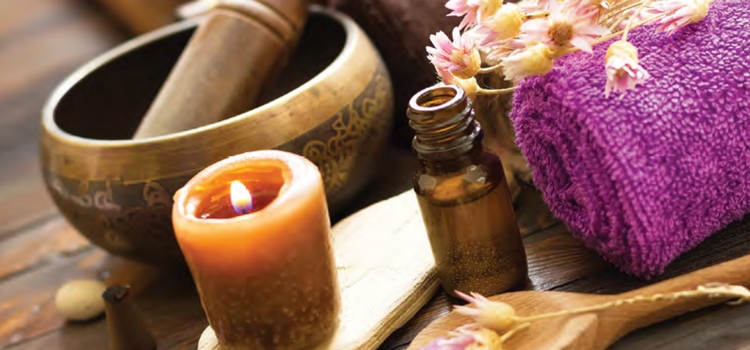
Give pills and prescription drugs a toss for your everyday health concerns. Here are four alternative therapies for you to explore beyond the conventional modes of treatment
Words by Charishma Thankappan Photographs: Various sources
In an ever changing world with new kinds of diseases being discovered every season, there is a growing need for more effective and efficient methods of healing. With illnesses mutating to more harmful forms and becoming less resistant to medications, patients are reaching out to other types of cures. It also reflects the increasing slant towards adopting natural kinds of aid rather than resorting entirely to chemical formulations. FWD Life explores four types of alternate remedies.
Aromatherapy
Aromatherapy is the art of using essential oils to treat the mind, body and spirit. It is a complementary therapy which works extremely well alongside conventional medicine. It stimulates the body’s natural powers to heal itself. Essential oils are used in aromatherapy treatments in a number of ways. They can be used for inhalation, body baths, footbaths and hand baths, compresses, gargles and mouthwashes, and massages.
The strong active ingredients in the essential oils are taken directly from medicinal plants or herbs through a process known as distillation. The oils are in a very concentrated formula and are usually combined with a carrier oil, such as almond, coconut oil or jojoba before being used. Shanti Mahadevan, Proprietor of Alternative Medicine Health Care Centre, Mumbai, says that aromatherapy is applicable for anyone with conditions such as blood sugar fluctuations, cancer, chronic stress or anxiety, depression, fatigue, insomnia and sleep trouble, joint pain, muscle pain, respiratory infections, skin problems including bites, rashes, and bruises.
Contraindications:
Ms Shanti says that medical advice should always be sought for a client with a medical condition to reduce the risk of adverse effects. “It should also be considered that, while massages may be contraindicated for certain conditions, other forms of treatment might be suitable, such as inhalation, compresses, skin creams and lotions etc.” Conditions that are contra-indicated to aromatherapy massage include fever, infectious diseases, skin diseases, and recent haemorrhage.
Cupping Therapy
Cupping therapy, also known as Hijama (Arabic term of wet cupping) is a form of treatment in which unhealthy blood is drawn by vacuum from a small incision upon the skin for therapeutic purposes. Dr. T K Mohammed Hassan from Dr. Hassan Ayurveda Brain and Spine Super Speciality Clinic, Ernakulam, says that the treatment can be carried out almost anywhere on the body, including in areas of pain.
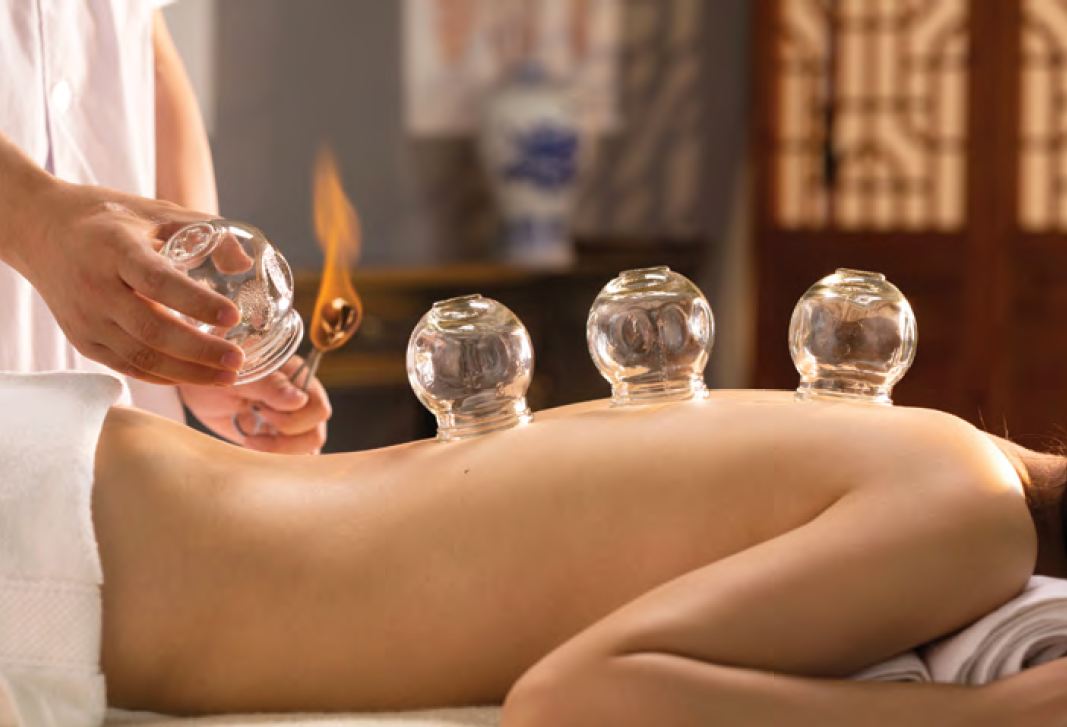
The chosen area of the skin is first shaved, if necessary, to ensure that the cup is tightly sealed. It is then left to cling to the skin for some time. It is then lifted and small incisions are made on the skin. The cup is then put back until the flow of blood subsides. This action immediately loosens or completely removes pathogens, toxins and fluids which block the efficient passage of any or all of blood-flow. The treatment is advisable for anyone ailing from head ache, hormonal imbalances, skin problems, body pain, varicose veins, etc. About the awareness levels of Cupping Therapy in Kerala, Dr Hassan says, “The treatment is not well known here, but among those who do know, it is mainly used for the treatment of varicose veins and related problems.”
Contraindications:
Dr Hassan warns that suitable cups must be used on the particular areas to be treated. The therapy is not recommended for pregnant women, and on inflamed skin.
Reflexology
Giving pressure on the openings of meridians (reflex points) in hands and feet to help the free flow of bioelectrical energy in the whole body is known as reflexology. This scientific system of treatment is highly effective and completely safe, and is a popular therapy. It effectively removes toxins that are accumulated in the body from food and medicines. It is practiced on the base theory that all body organs are represented on hands and feet. Mrs Retna Aravind, owner of Manu’s Holistic Center, based in Ernakulam, and teaches reflexology among other alternative therapies, says, “The thumb or index finger is used to activate the reflex points for various organs. In some cases, even instruments are used depending upon the hardness of the feet where a particular organ is represented. E.g., sciatic nerve on soles of feet is quite a hard area to apply pressure upon and usually the use of a strong instrument is required.”
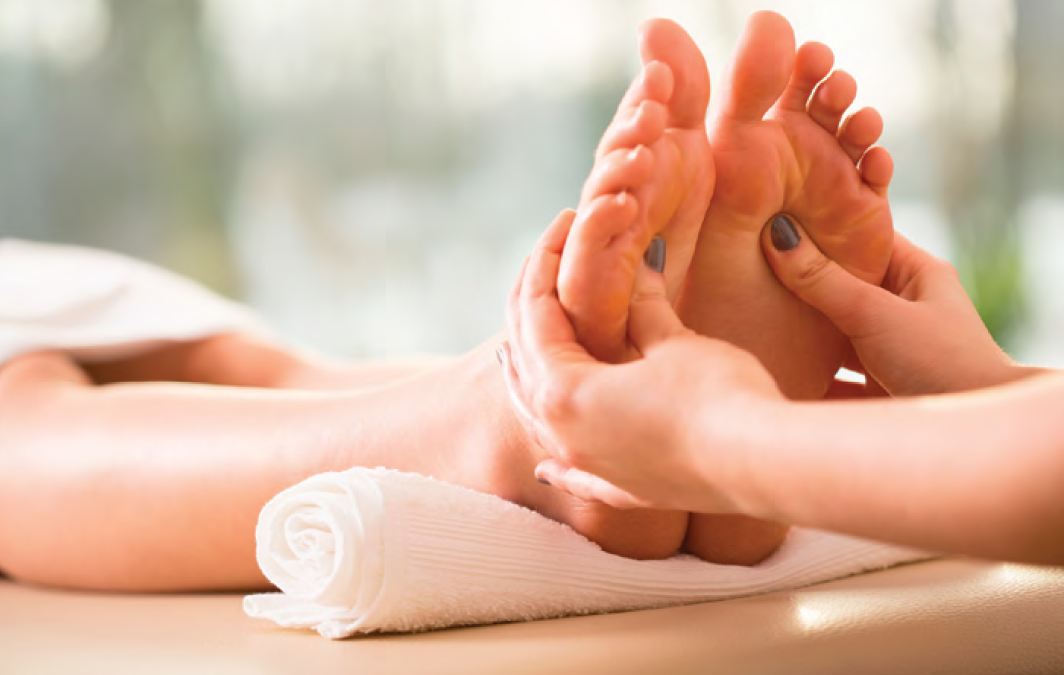
She says that it is recommended for people who suffer from all physical and psycho-somatic problems irrespective of age and sex. “However, before starting the treatment, the therapist should have full awareness about the physical condition of the patient.” The benefits accrued from reflexology include increased immunity, relaxation of body and mind, removal of toxins, and pain relief. Mrs Retna observes that people in Kerala are not very aware about reflexology. However within the state, “people from North Kerala have much more awareness compared to other parts of Kerala”.
Contraindications:
Mrs Retna advises that the case history of the patient’s medical records should be checked for chronic problems and serious illnesses.
Naturopathy
Dr Lakshmi N Nair, Yoga Naturopathy medical officer at District Ayurveda Hospital in Ernakulam, terms naturopathy as “living in tune with the constructive principles of nature to preserve and promote health and also to prevent diseases”. It can be defined as the system of healing without the use of drugs as medication, and instead employing natural means such as diet control, massages, yoga, etc.
All kinds of lifestyle disorders and infectious diseases can be controlled or cured by Yoga Naturopathy treatments. This type of healing aims to cure ailments right from the root cause. “Nowadays our society is continuously under the attack of various types of fever and other infectious diseases. When we try to treat it with drugs by targeting the disease causing microbes, we may get results for the time being, but the fever returns in another form, and most of the times more vigorously,” says Dr Lakshmi. “It is high time we change our attitude towards it. Infectious diseases occur due to three factors – the agent (the microbes), the host (the human body) and our environment. So when we try to treat by targeting the microbes we are leaving the body exposed to another kind of fever. Naturopathy believes that instead of targeting the microbes make your body healthy and toxin free, so that your body will have immunity against any kind of fever.”
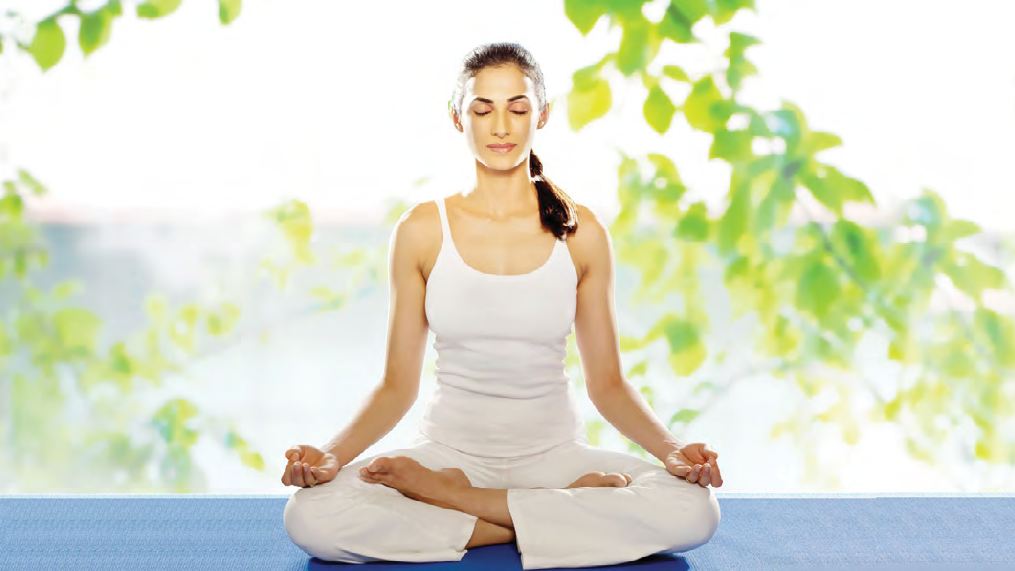
The current society is suffering from many lifestyle disorders, says Dr Lakshmi. “But instead of correcting that lifestyle many like to take medicines and control the symptoms which ultimately lead to worsening of the condition and its complications.” Naturopathy trains one to listen to the symptoms and demands of the body during disease and act accordingly. Dr Lakshmi says that in Kerala, the awareness about this system of healing is increasing day by day and many people are resorting to its beneficial effects. “The government started a 10-bedded Yoga Naturopathy hospital in Varkala which has now developed to 50 beds. We also have more than 50 doctors in the government sector and private hospitals in every district.” One can avail Yoga Naturopathy advices in all district Ayurveda hospitals and also in AYUSH wellness centres.
Contraindications:
“Yoga Naturopathy treatments are found less effective if your immune system is extremely weak and your body has lost its ability to heal itself,” says Dr Lakshmi. This usually happens with patients who have been under medication for prolonged years and have been taking immunosuppressant drugs after organ transplant. Yoga Naturopathy treatments are also found limited in treating genetic disorders.
Some other alternative therapies
- Colour therapy
- Pet therapy
- Music therapy
- Reiki
- Accupuncture
- Accupressure
- Sujok
- Chiropractic
Difference between Alternative Therapies and Complementary Therapies
Alternative therapies and complementary therapies are commonly confused and perceived to be one and the same. However, the essential difference lies in the purpose of the therapies.
Alternative therapies are used as a complete form of treatment and as a substitute to conventional healing techniques.
Complementary therapies are used in conjunction with conventional or alternative therapies to help enhance the remedial process and effects.
Wellness
Kintsugi: The Art of Embracing Imperfections
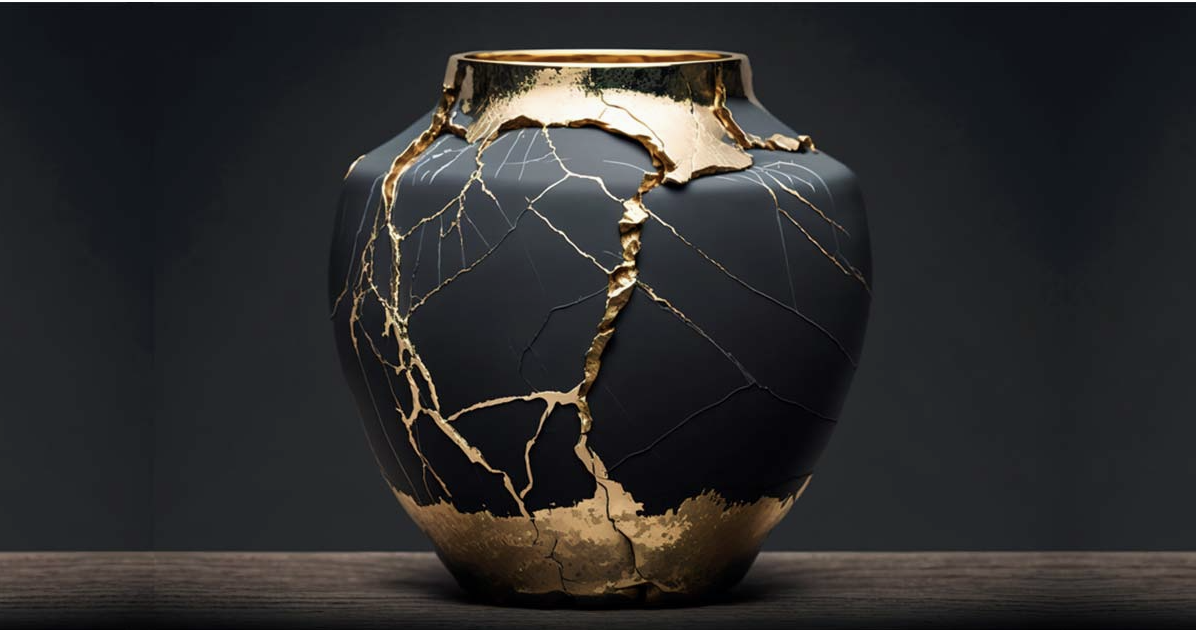
Kintsugi, an ancient Japanese art form, beautifully illustrates the philosophy of finding beauty in imperfection. Translating to “golden joinery,” Kintsugi involves the repair of broken pottery by mending the cracks with lacquer mixed with powdered gold, silver, or platinum. Instead of hiding the damage, Kintsugi emphasizes the fractures, turning them into unique, golden veins that celebrate the history and flaws of the object.
The Origins and Philosophy of Kintsugi

Dating back to the 15th century, Kintsugi emerged during the Muromachi period in Japan when Shogun Ashikaga Yoshimasa sent a damaged tea bowl to China for repairs. Disappointed by the lackluster results, Japanese craftsmen began experimenting with more aesthetic solutions, ultimately developing Kintsugi as a delicate blend of craftsmanship and philosophy.
Kintsugi is deeply rooted in the Japanese principle of wabi-sabi, which appreciates the transient and imperfect nature of life. The art form embodies the idea that brokenness is not something to be hidden but embraced, turning flaws into features that add character and beauty. This approach teaches us to value resilience and transformation, finding strength in vulnerability and growth in the aftermath of adversity.
The Process of Kintsugi
The Kintsugi process is meticulous and requires patience. First, the broken pottery pieces are carefully cleaned and realigned. A lacquer made from urushi, a tree sap native to Japan, is applied to bond the pieces together. Once dried, the lacquer is mixed with powdered gold, silver, or other metals, creating a brilliant contrast that highlights the cracks. The final result is a restored object, now more valuable and striking for having been broken.
There are three main techniques in Kintsugi:
- Crack Repair: Filling simple cracks with gold or another precious metal to showcase the repaired lines.
- Piece Replacement: Using gold to fill in missing parts of the pottery, creating a striking effect where the gaps were once evident.
- Joint Call: Combining different pieces from separate items to form a new, unified whole.
Symbolism and Modern Interpretations

Beyond its aesthetic appeal, Kintsugi carries profound symbolism. It serves as a reminder that, like pottery, human beings can also be broken and healed, and that these imperfections become integral to our identity. In a world that often seeks perfection, Kintsugi advocates for self-acceptance and the celebration of our own personal journeys of healing and renewal.
In modern times, Kintsugi has transcended its original context and found a place in various art forms, design, and even personal development philosophies. It is often referenced in literature, fashion, and mental health discussions as a metaphor for resilience and the beauty of imperfection.
Kintsugi in Contemporary Culture
Kintsugi’s influence has reached far beyond Japan. Artists, designers, and even therapists have embraced its concepts to inspire creative projects and self-reflection. In the world of fashion, for instance, the Kintsugi technique has inspired prints, patterns, and embellishments, representing fractured beauty through clothing. In interior design, Kintsugi-inspired pottery and decor have become symbols of elegance and mindful living.
Beyond art, Kintsugi’s message resonates with personal growth and wellness. It teaches us to honor our personal scars and experiences, making them part of who we are instead of something to hide.
The Beauty of Brokenness
Kintsugi is a timeless art form that transforms brokenness into beauty, offering a powerful metaphor for life. By emphasizing the beauty in imperfections, it teaches us to embrace flaws and recognize that each crack tells a story. In doing so, Kintsugi challenges us to rethink our relationship with imperfection, urging us to find beauty in our own broken pieces.
Wellness
Art Therapy: The Healing Power of Creativity

In a world filled with stress, anxiety, and emotional turmoil, finding solace and healing through creative expression has become increasingly recognized and valued. Art therapy harnesses the transformative power of creativity to promote emotional well-being, self-discovery, and healing. Let’s explore the profound impact of art therapy and how it can unlock the healing potential within all of us.
What is Art Therapy?
Art therapy is a form of psychotherapy that uses art-making as a therapeutic tool to explore and express emotions, thoughts, and experiences. Through various artistic mediums such as painting, drawing, sculpting, and collage, individuals are encouraged to tap into their inner creativity as a means of self-expression and self-discovery.
In art therapy sessions, trained therapists provide a safe and supportive environment for individuals to explore their feelings and experiences through art-making. Participants are guided through various exercises and prompts designed to stimulate creativity, encourage self-reflection, and promote emotional healing.

Art therapy offers a wide range of benefits for mental, emotional, and physical well-being:
- Emotional Expression: Art provides a non-verbal means of expressing emotions that may be difficult to articulate verbally.
- Stress Reduction: Engaging in creative activities can reduce stress levels and promote relaxation, helping individuals to cope with life’s challenges more effectively.
- Self-Exploration: Art-making allows individuals to explore their inner thoughts, feelings, and beliefs, fostering greater self-awareness and insight.
- Healing Trauma: Art therapy can be particularly effective in processing and healing trauma, providing a safe outlet for releasing pent-up emotions and transforming painful experiences.
- Enhanced Communication: For individuals who struggle with verbal communication, art therapy offers an alternative mode of expression, facilitating communication and interpersonal connections.

Art therapy is used in a variety of settings and populations, including:
- Mental Health Treatment: Art therapy is often used as part of treatment for individuals with mental health disorders such as depression, anxiety, PTSD, and eating disorders.
- Hospitals and Healthcare Settings: Art therapy is utilized in hospitals and healthcare settings to promote healing and well-being among patients coping with illness, chronic pain, or medical procedures.
- Schools and Education: Art therapy programs in schools help children and adolescents explore and process emotions, develop coping skills, and enhance self-esteem.
- Community and Social Services: Art therapy is used in community settings to support individuals facing life transitions, grief and loss, addiction recovery, and other challenges.

Interested in exploring art therapy? Here are some tips to get started:
- Find a Qualified Art Therapist: Look for a licensed art therapist who has completed specialised training and certification in art therapy.
- Experiment with Different Mediums: Don’t be afraid to explore different artistic mediums and techniques to find what resonates with you.
- Set Aside Time for Creativity: Make time in your schedule for regular art-making sessions, even if it’s just a few minutes each day.
- Embrace the Process: Remember that art therapy is not about creating a masterpiece; it’s about the process of self-expression and self-discovery.
Art therapy offers a powerful avenue for healing, self-expression, and personal growth. By tapping into our innate creativity, we can unlock the healing potential within ourselves and embark on a journey of self-discovery and emotional well-being. Whether you’re struggling with mental health challenges, navigating life transitions, or simply seeking greater self-awareness, art therapy offers a safe and supportive space to explore, express, and heal.
Wellness
Embracing the Magic of Simple Walking Every Day

In our modern, fast-paced world, where everything seems to be in constant motion, it’s easy to overlook the simple yet profound act of walking. Walking is not just a means of getting from point A to point B; it’s a gateway to a myriad of physical, mental, and emotional benefits. In this blog, we’ll explore the magic of simple walking every day and how it can transform our lives for the better.
Physical Health Benefits:

Walking is one of the most accessible forms of exercise, requiring no special equipment or membership fees. It strengthens the heart, improves circulation, and helps maintain a healthy weight. Regular walking has been linked to a reduced risk of chronic diseases such as heart disease, diabetes, and certain cancers. It’s gentle on the joints and can be adapted to any fitness level, making it an ideal form of exercise for people of all ages.
Mental Clarity and Creativity:

Walking has a profound effect on our mental well-being. The rhythmic motion of walking can help clear the mind and reduce stress and anxiety. Many great thinkers, from Aristotle to Steve Jobs, have extolled the virtues of walking for sparking creativity and problem-solving. Studies have shown that walking in nature, known as “forest bathing,” can have a calming effect on the mind and improve cognitive function.
Connection with Nature:

Walking provides an opportunity to connect with the natural world, even if it’s just a stroll through a neighborhood park. Spending time outdoors has been shown to boost mood and increase feelings of vitality and happiness. Observing the changing seasons, listening to birdsong, and feeling the sun on your face can foster a sense of awe and wonder.
Social Connection:

Walking can be a social activity, whether it’s taking a leisurely stroll with a friend or joining a walking group in your community. Walking side by side with someone facilitates meaningful conversations and strengthens relationships. Even walking alone can create opportunities for serendipitous encounters with strangers and moments of connection.
Mindfulness and Presence:

Walking can be a form of moving meditation, allowing us to be fully present in the moment. Focusing on the sensations of walking – the rhythm of our breath, the feeling of our feet connecting with the ground – can bring us into a state of mindfulness and awareness. Walking mindfully can help us let go of worries about the past or future and find peace and contentment in the here and now.
In a world that often values speed and efficiency above all else, the simple act of walking reminds us to slow down, savour the moment, and appreciate the beauty of our surroundings. By incorporating regular walks into our daily routine, we can reap a multitude of physical, mental, and emotional benefits that enrich our lives in profound ways. So lace up your shoes, step outside, and discover the magic of simple walking every day.
-

 Style11 months ago
Style11 months agoBridal Guide : Best Looks of Radhika Merchant Ambani
-

 Fashion1 year ago
Fashion1 year agoMost Discussed Ajrakh Saree of Alia Bhatt
-

 Entertainment1 year ago
Entertainment1 year agoBridal Bliss : All Bridal Looks of Swasika Vijay
-

 Movies1 year ago
Movies1 year agoA Nostalgic Journey Through Love &Cinema : Best Bollywood Romantic 90s Movies
-

 AD8 months ago
AD8 months agoPopular Curtain Fabrics to Consider for Your Home
-

 Events9 months ago
Events9 months agoBest of Fashion Looks : Diya Krishna Wedding
-

 Events8 months ago
Events8 months agoThe L’Oréal Paris Show at Paris Fashion Week 2024
-

 news8 months ago
news8 months agoLaapataa Ladies: Kiran Rao’s Social Satire Becomes India’s Official Entry for the 2025 Oscars





































